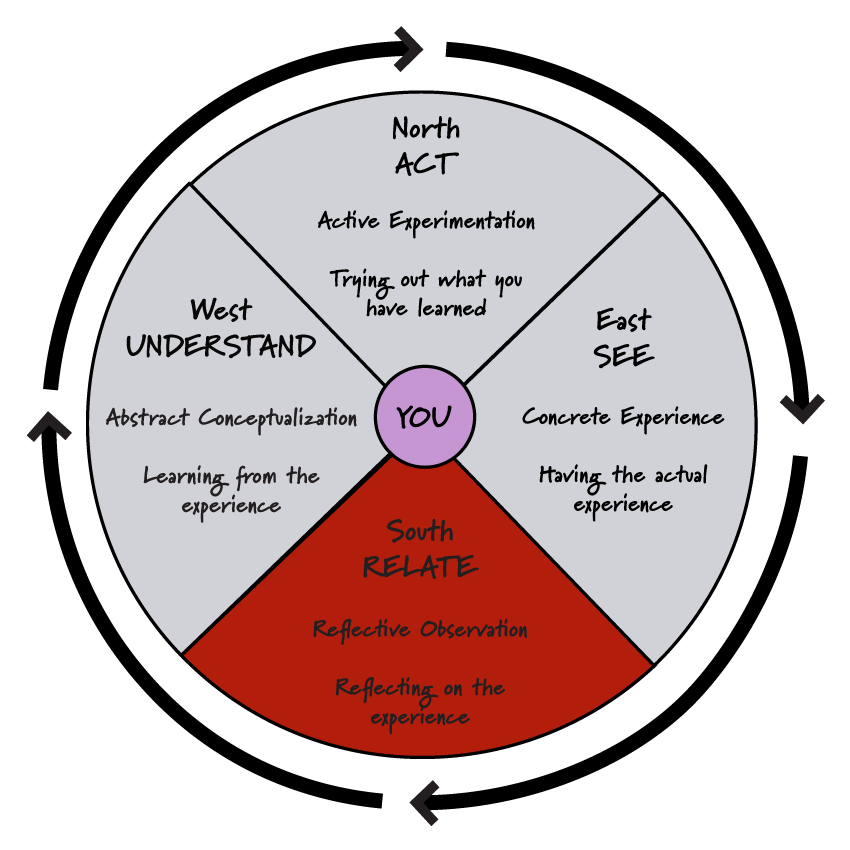
In Connection 2, you will learn that when working with people of different cultures such as the Nbisiing Nishnaabeg, service providers must become aware of their own positionality and their own understandings of wellness.
THE SOUTH: RELATING FILM AND READING TO YOUR EXPERIENCE
You will begin Connection 2 in the South where you will relate what you have learned from This Was Real to a reading about self-location. As you move through Connection 2, you will reflect on your experiences, your positionality, and your personal understanding of wellness. You will finish Connection 2 with a reading and a reflection checkpoint exercise.

Learning about Positionality and Wellness
Through reading the short paper, Self-Location and Ethical Space in Wellness Research, you will learn about how to acknowledge and reflect on your own history, assumptions, beliefs, and values. This paper relates to our work with the Nbisiing Nishnaabeg and how we prepared to work with their stories of wellness in a good way. Click on the following link to read the Self-Location and Ethical Space in Wellness Research [article]![]() .
.
Checkpoint 2: Your Story of Wellness
After reading the article on self-location, where do you see your own story of wellness in relation to the stories in the film This Was Real. Write your story using the story prompts below.
Connection 2 Summary
In Connection 2, we learned that:
- We should gain an awareness of our own positionality and how it can impact others
- We all have a story of wellness, and it may shape how we provide care for others

To move on to Connection 3, click on the “Next: Connection 3: Understanding Cultural Safety →” button at the bottom right hand corner of this page.
References
Peltier, C., Manankil-Rankin, L., McCullough, K. (2019). Self-location and ethical space in wellness research. International Journal of Indigenous Health, 14(2), Article 3, DOI: 10.32799/ijih.v14i2.32958.

